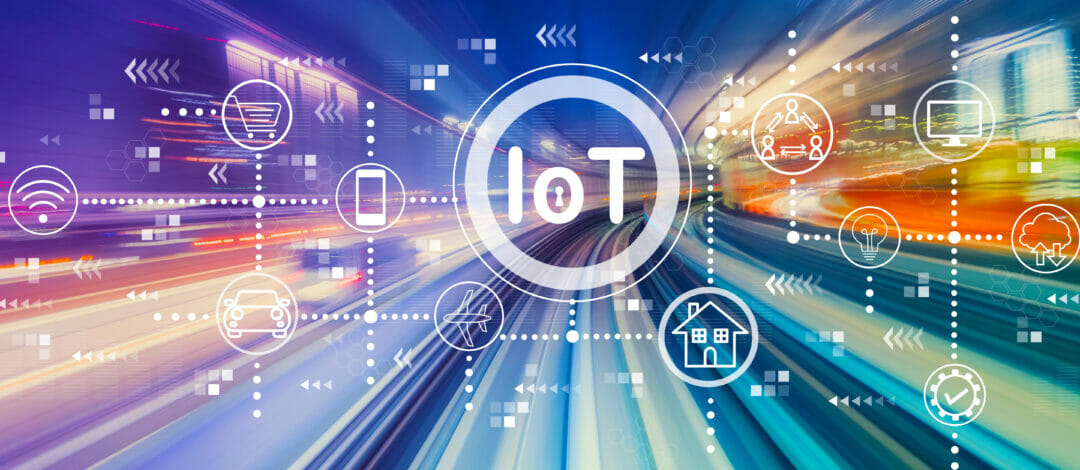We live in connected times. The technology landscape has been reshaped in the wake of the COVID-19 pandemic. Businesses are leaning on automation, data mining and machine learning more than ever before, and the convergence of multiple technologies is creating a groundswell of innovation. Against this backdrop, IoT is moving into the spotlight, providing tangible competitive advantages for businesses operating across a wide range of verticals. At EMnify, we expect to see a raft of transformative market developments as we move into 2022 and beyond. Whatever your strategic focus for 2022, the year ahead is loaded with potential for business and IT leaders, so read on for our top IoT predictions.
1. A paradigm shift to remote SIM provisioning
The digitisation of SIMs in IoT deployments is underway, allowing businesses to remotely activate the SIMs embedded in their endpoints. Users can install global SIM profiles onto compatible devices in seconds, without having to order and swap physical cards. This significantly simplifies and shortens the provisioning process, as well as bypassing shipping fees and consigning delivery problems to the history books.
Whether it’s a compatible pluggable SIM or an embedded SIM card, combine it with an embedded universal integrated circuit card (eUICC) and a remote SIM provisioning platform. This allows even global large-scale deployments to operate with a single SKU approach and switch profiles later, if needed. Roaming restrictions are bypassed and carrier profiles can be switched over the air. Watch out for rapid adoption of remote SIM provisioning in 2022 and beyond.
A guide to sensor technology in IoT
2. Satellite-based IoT becomes a reality
Internet everywhere is gaining traction, as satellite narrowband IoT is poised to plug the gap between terrestrial mobile connectivity services and non-cellular IoT networks. At present, ground-based connectivity services are far from ubiquitous, with vast tranches of the Earth’s surface not covered by cellular networks.
This presents a colossal opportunity for satellite IoT, which solves the problem of mobile connectivity in remote locations. Potential applications include asset tracking, oil and gas industries, utilities, manufacturing and construction.
Although Starlink is probably the most prominent exponent of satellite IoT, there’s a growing number of companies lining up to harness this new technology. 2022 could be a watershed year for the tech, helping to spawn new sectors and bring niche markets towards the mainstream.
3. The metaverse interlocks with IoT
Digital twins are nothing new, but the terminology is beginning to cut through into everyday tech language. Being able to interpret physical objects in digital form with overlaid data to create a digital twin allows for highly complex simulations. But when this digital representation is embedded within the metaverse, the benefits to business begin to rise exponentially.
A business can now recreate anything from a single end point to an entire factory or ecosystem in digital form. And placing the digital twin within the metaverse, complete with live feeds, allows for everything from more accurate predictive maintenance, to maximised productivity based on almost limitless scenarios. Even smart cities can be modelled successfully, accurately and in real-time.
When IoT is combined with the metaverse, sensor data takes on a whole new dimension. The pieces are all beginning to fall into place, and the new reality is not too far away.
Looking into the future of the metaverse
4. A new generation of IoT innovators
IoT adoption is already making a significant positive impact on businesses. Operational cost savings, improved work safety, better business opportunities and heightened customer retention are all pushing IoT up the agenda. Yet as IoT becomes the driving force behind industry 4.0, many of the first-generation players will start to get left behind.
As we progress into 2022, the spotlight will shine more brightly on cellular connectivity innovators. The stage is set. The benefits are clear. And the technology has been proven. We’re heading towards a mega trend where investors will be vying for a piece of the IoT action, pushing hard to accelerate innovation and growth within next generation IoT connectivity providers.
5. IoT moves up the stack
The use case for IoT is evolving. It’s no longer just about pure data acquisition — IoT is now poised for deep integration within the heart of corporate enterprise. IoT providers are already moving up the value stack. From delivering connectivity, to providing a platform layer that collects and acts upon data, to baking in value-add services and providing deeply integrated business-critical applications.
In 2022, we’re going to see more IoT companies rising to the top, jostling for position in the upper echelons of the value stack.
The main types of IoT sensors in the market today
6. Security looms large
As larger and more complex IoT deployments become the norm, attention is increasingly shifting towards secure networking setups and stricter device policies. As well as offering a raft of benefits to a range of industrial applications, IoT ecosystems can cause businesses potentially irrevocable damage if breached.
Humans and manual processes are typically the weak links in the security chain. But when a security breach occurs within an IoT environment, not only can IoT devices be misused, but cyber criminals can also compromise or sabotage data, trigger physical actions and create destructive scenarios that impact upon the real world. As a result, a renewed emphasis on private networks and advanced security measures will drive discussions in 2022 and beyond.
7. The rise and rise of no code
No code delivers big benefits to IoT applications, and bringing the two together is going to be a core theme throughout 2022. Connecting the various back-end systems, endpoints, security layers and platforms requires custom software development. And plenty of it. That can be highly challenging and extremely time consuming when employing traditional development routes and a highly competitive market short in skills.
With no code, there’s no need for programming knowledge. It’s all served up in a visual drag-and-drop user interface. Not only is it simple, over the last few months and years no code has become leaner, more effective and more widely accepted as a robust alternative to hand coding. When applied to IoT, the benefits of no code are greatly accentuated. That’s why it’s on my list of IoT predictions for 2022.











